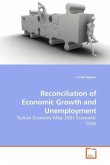From the 1990s onwards, the Central and Eastern
European (CEE) countries, which are in progress of
joining the euro area, went through a major
privatization and liberalization process. As a
product of these market economy policies, the CEE
countries experienced an important change in their
financial markets, namely a significant rise in the
share of foreign bank ownership, followed by rapid
credit growth in the domestic economy. This book
studies the determinants of credit growth in the CEE
countries in terms of bank ownership structure, and
then analyzes the impact of euro adoption on this
growth pattern, by analyzing bank-level data from
1988 onwards. The analysis sheds light on the
different behavior of foreign-owned banks in terms of
their motivation and means of credit growth; and
whether this pattern of rapid credit growth would be
affected once the CEE countries join the euro area.
This book should be instrumental for policymakers,
professionals or anyone interested in the
macro-financial stability issues.
European (CEE) countries, which are in progress of
joining the euro area, went through a major
privatization and liberalization process. As a
product of these market economy policies, the CEE
countries experienced an important change in their
financial markets, namely a significant rise in the
share of foreign bank ownership, followed by rapid
credit growth in the domestic economy. This book
studies the determinants of credit growth in the CEE
countries in terms of bank ownership structure, and
then analyzes the impact of euro adoption on this
growth pattern, by analyzing bank-level data from
1988 onwards. The analysis sheds light on the
different behavior of foreign-owned banks in terms of
their motivation and means of credit growth; and
whether this pattern of rapid credit growth would be
affected once the CEE countries join the euro area.
This book should be instrumental for policymakers,
professionals or anyone interested in the
macro-financial stability issues.








